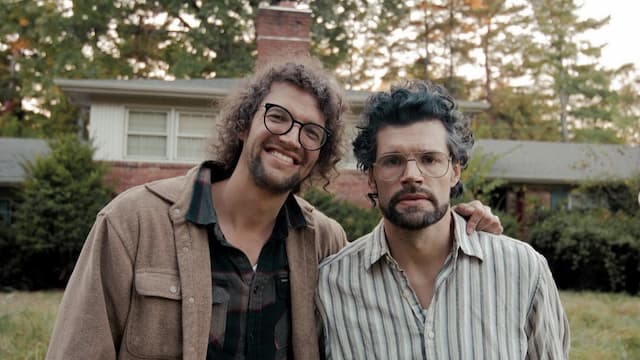Christians transforming ecology

“God revealed that actually everything that we need is already there. As humans we just have to learn to work with nature, rather than hitting it on the head all the time.” – Tony Rinaudo
Promising new technologies can make this world a better place. Take Farmer-Managed Natural Regeneration (FMNR), a reforestation technique developed by Australian Christian agronomist Tony Rinaudo.
We first published about Rinaudo five years ago, in JNI 922, a special edition on ‘turning the deserts into forests’, but his story is so valuable that it deserves more attention.
Rinaudo, who now works as Principal Advisor for Natural Resources Management at Christian charity World Vision Australia, is known as the Forest Maker or Tree Whisperer. He is one of the very few people on earth whose achievements can be seen on satellite images. This man is responsible for regenerating no less than 240 million trees in the last 30 years.
In 1983, after two years of doing reforestation ‘the old way’ in Niger, namely by planting trees, Rinaudo despaired: “I was in charge of a reforestation project that was failing miserably, it wasn’t that I was particularly dumb, it was the same story all over West Africa. And I remember the frustration that just hit me: north, south, east, west, was a barren landscape, and I knew perfectly well that 80 or 90% of the trees I was carrying in my car for planting would die.”
But then Rinaudo took a closer look at the few bushes scattered around the land. He knew these bushes were in fact trees that had been hacked down. Suddenly he wondered: what if we would prune these left-over trees and allow them to grow? In that moment, which he describes as an ‘answer to prayer’, everything changed. “We didn’t need to plant trees, it wasn’t a question of having a multi-million dollar budget and years to do it, everything we needed was already in the ground.”

After his discovery, Rinaudo had to overturn generations of accepted wisdom, as well as a resistance to giving some land back to nature. “When you’ve got people who are on the edge of starvation every year, not just in famine years, you’ve got this perception that you need every square inch of farmland to grow food crops. And here’s this nut telling people they should sacrifice some of their land for trees.”
But as soon as farmers started to see the results of Rinaudo’s method (called Farmer-Managed Natural Regeneration, or FMNR), the new technique took off. And here we are: 3 decades later and 240 million trees richer. At the UN’s global climate talks in Katowice (December 2018), Rinaudo explained the profound impact of these trees. They:
- improve farming yields;
- reduce ground temperatures;
- hold water in the soil;
- provide firewood;
- make farming in hot places more comfortable;
- and last but not least: all these trees act as a powerful carbon sink, with the potential to draw in billions more tonnes of carbon.

A satellite image of the Humbo region of Ethiopia, showing tree cover in 2005 (left) and in 2017 (right). The images below show the situation on the ground before and after. (Courtesy of World Vision)
In September 2018, Rinaudo received the Right Livelihood Award, often described as the Alternative Nobel Price. Rinaudo received the award “for demonstrating on a large scale how drylands can be greened at minimal cost, improving the livelihoods of millions of people. Rinaudo’s reforestation method has the potential to restore currently degraded drylands with an area the combined size of India.”
FOR FURTHER READING
For further reading you might want to download the free short e-book ‘Tony Rinaudo: The Forest Maker’ (pdf). Or read this transcript of an interview with Rinaudo for ISCAST (Christians in Science and Technology) on theology and agriculture, the challenges of cross-cultural development, the sins of an affluent West, and of angrily wrestling with God in prayer. More information on Rinaudo’s method can be found on the FMNR website.
Source: Evert-Jan Ouweneel, World Vision Australia

Joel News # 1125, May 19, 2019

The prophet Isaiah once spoke about new things God is doing: a way in the wilderness, springs in the desert, streams in the wasteland, a new season of blossoming and fertility. But is this really feasible in dry places like North Africa, the Middle East and Central Asia? Luc Gnacadja believes so. “Drylands are a mission field, an opportunity for transformational business models and prosperity,” he says.
Gnacadja is the former Minister of the Environment for Benin. He brings his Christian faith to his campaign against land degradation, promoting global sustainability through care for land and soil. For the past seven years, he was the executive secretary of the UN Convention to Combat Desertification. He is a passionate advocate of Zero Net Land Degradation by 2030 for the sake of healthy and productive land for future generations.
Gnacadja believes desertification is the main cause of the surge in migration into Europe. Already this year 110,000 illegal migrants have been caught trying to cross the Mediterranean on boats, compared to 20,000 in all of 2012. Most of these refugees are coming from North Africa and the Sahel, the Middle East and Central Asia. They are trying to flee from the effects of decades of environmental degradation which have been compounded by escalating climatic shocks such as droughts. These regions are today’s most human-insecure and conflict-prone globally, but also the majority of the world’s unreached peoples live here.
‘Christians should be prophetic. Drylands are a mission field.’
 Perhaps it’s a responsibility for Europe to address the ‘push-factors’ of forced-migration, Gnacadja suggests. “Drylands are not marginal regions, they represent one third of the world’s land mass and population, nearly half of the world’s food production, half the world’s livestock and are home to the largest diversity of mammals.”
Perhaps it’s a responsibility for Europe to address the ‘push-factors’ of forced-migration, Gnacadja suggests. “Drylands are not marginal regions, they represent one third of the world’s land mass and population, nearly half of the world’s food production, half the world’s livestock and are home to the largest diversity of mammals.”
Driving his point further still, Gnacadja unpacks the concept of ‘land footprint’, the area needed for any region’s food production. ‘Virtual land’ describes the foreign land needed for the region’s imports and exports. In the case of the 28 European Union member states that is over a quarter of the globe, creating a huge virtual land trade imbalance. Asia, Africa and Latin America are Europe’s main ‘virtual land‘ suppliers. Yet another related concept is that of ‘water footprint’, and again Europe’s footprint, and therefore ecological responsibilities, extend far beyond her geographical boundaries. Africa’s problems are therefore also Europe’s problems, and Europeans should seriously consider how best to invest in renewable energy, education, health, water, woodland and re-forestation projects in that continent.
There might be a role for Christian professionals and entrepreneurs here, says Gnacadja. “Drylands are a mission field, an opportunity for transformational business models, a new frontier to engage in co-prosperity. Christians should be prophetic. Jeremiah chapter 12 talks of wasteland and parched ground mourning God. We have a mission to restore the people and their land, and thus mitigate the push-factors of forced-migration.”
‘One of the world’s most successful approaches to restore the land came as an answer to prayer.’
Mission agencies in Niger are already experiencing remarkable results in making man-made barren land to thrive. “When you understand desertification,” Gnacadja says quoting Australian Tony Rinaudo, “you can restore the land.” Rinaudo, also a Christian, developed ‘farmer-managed natural regeneration’ (FMNR) literally as an answer to prayer. This approach has been recognised as one of the most successful and cost-effective regenerative agro-forestry schemes in the world.

Tony Rinaudo with a farmers’ family in East Timor.
Rinaudo realised that beneath what seemed to be arid desert were hundreds of tree stumps buried in an ‘underground forest’. Instead of destroying the growth from these stumps as was standard farming practice, this indigenous growth needed to be nurtured. Seemingly treeless fields could contain seeds, living tree stumps and roots with the ability to sprout new stems and regenerate trees. Biodiversity could be increased, soil structure and fertility improved, wind and water erosion reversed and dried up springs coaxed to reappear.
Already five million hectares of land in Niger had been regenerated in this way, feeding 2.5 million people with 500,000 tonnes of new cereal production. In this video and this interview Rinaudo, who currently works as a natural resource management advisor for World Vision, explains the approach. Farmer-managed natural regeneration (FMNR) is explained in detail here.
Source: Luc Gnacadja, Jeff Fountain
Promising new technologies can make this world a better place. Christian relief organization World Vision has a keen interest in turning salt water into sweet water.
Today, 2.1 billion people lack safe drinking water at home, a figure that is expected to increase as our water use is growing twice as fast as our population growth. For this reason, 193 countries committed in 2015 to Sustainable Development Goal #6: access to safe water and sanitation for all by 2030. Not an easy goal to pursue. The world is facing severe water challenges: more droughts, melting ice caps, pollution, lack of water infrastructure, growing bio-energy demands, growing meat demands, and endangered ecosystems.
But here is an intriguing fact: most countries have a coast line and therefore direct access to plenty of salt water. So desalination (turning salt water into sweet water) might be one of the most obvious solutions to the scarcity issue. But as desalination plants cost a lot of money, there is a need to find more affordable, small-scale and distributed solutions.
Take this World Vision project in Sri Lanka, where they make pure water using solar desalination, a sustainable drinking water supply from all types of contaminated water.
Source: World Vision



